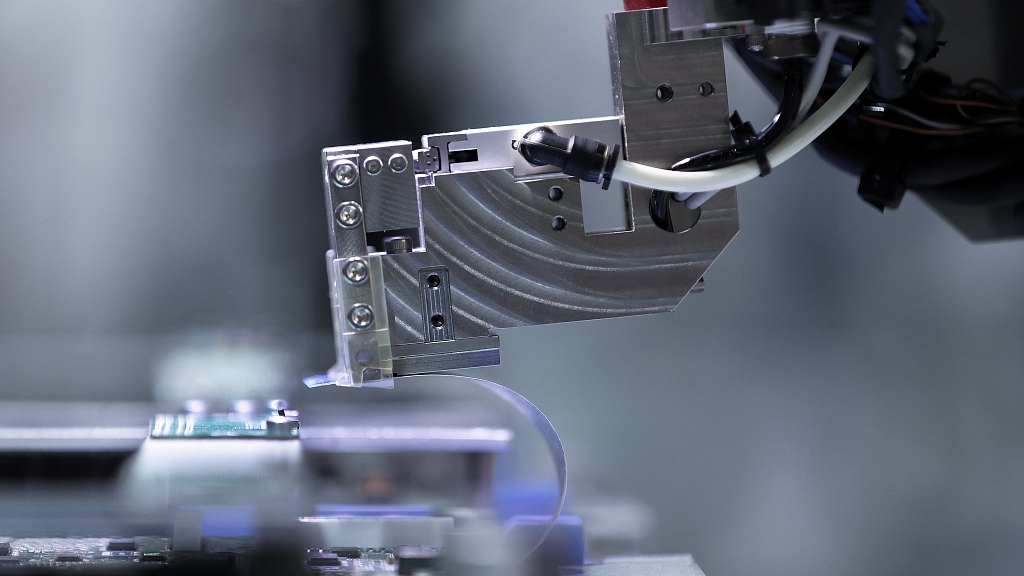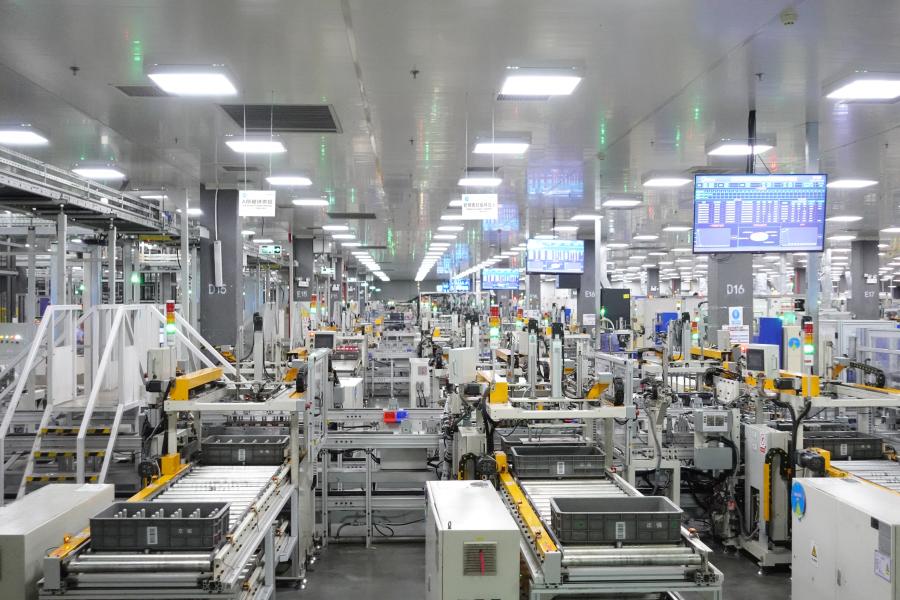
A Nachi-Fujikoshi Corp. robotic arm during a demonstration at the International Robot Exhibition in Tokyo, Japan, March 9, 2022. /CFP
A Nachi-Fujikoshi Corp. robotic arm during a demonstration at the International Robot Exhibition in Tokyo, Japan, March 9, 2022. /CFP
Editor's note: Anir Chowdhury serves as Policy Advisor to the Bangladesh government's flagship digital transformation program A2I in ICT Ministry and Cabinet Division supported by UNDP. The article reflects the author's opinions and not necessarily the views of CGTN.
We face a historic fork in the road. Automation, virtual reality, and artificial intelligence could lift entire societies out of poverty, and grant millions access to the global economy. However, the less rosy alternative is that it could wipe out entire labor-based industries and extinct crucial jobs, whilst encouraging wealth to accumulate in the hands of the 1 percent.
It's crucial that policymakers make sure that the 4th Industrial Revolution (4IR) work for everyone, not just the privileged few.
The 4IR is more than a buzzword, it is already triggering a paradigm shift in the way we live. It can be defined as "blurring the lines between the physical, digital and biological spaces."
This revolution comes from the rise in the developments of technologies such as artificial intelligence, blockchain, biometrics, the internet of things, virtual reality, and augmented reality.
If these transformative technologies are utilized equitably, they may be able to eradicate issues that come with the global digital divide and raise the living standards of millions, if not billions of people.
Global productivity will be reflected in how effectively general public services will be distributed using these technologies. Digital health will provide healthcare to anyone from anywhere. New Digital infrastructure could grant much access to vital public services, from land registry to telehealth doctors appointments. Artificial intelligence will even be able map floods and predict them with new levels of accuracy.
In fact, Nokia Bell Labs has predicted that industrializing these sectors could likely result in productivity jump of about 30 to 35 percent by applying historical formulas.
However, we will only be able to achieve this utopia by sidestepping the dystopia that could occur. The UN deputy secretary-general Amina Mohammed warns that the digital divide might be "the new face of inequality," in light of the current digital environment. She further highlighted that almost half of the world's population (mostly women and people in developing countries) are still offline. The fourth industrial revolution could exacerbate the divide between the digital haves and have nots.
Most developing countries have labor intensive economies. For example, most of Bangladesh's exports come from the textile industry – of which garments account for more than 80 percent of total exports, and produces $34 billion annual revenue.
So, what happens to these people when they're replaced by machines? How do we ensure that developing economies can become more digitized, and still protect those that are completely dependent on their jobs for survival?

A workshop of a microwave oven factory of Midea Group, a Chinese home appliance giant, in Foshan City, south China's Guangdong Province, April 1, 2021. /Xinhua
A workshop of a microwave oven factory of Midea Group, a Chinese home appliance giant, in Foshan City, south China's Guangdong Province, April 1, 2021. /Xinhua
In Western countries, the first sign of this digital divide was highlighted by the COVID-19 pandemic. The pandemic forced governments all over the world to quickly develop digital systems to facilitate remote work and online school. In the UK, it was reported that "2.6 million schoolchildren live below the poverty line in England alone," and that 9 percent did not have an access to a computer or internet connection at home.
Such issues may be further exacerbated by the fourth industrial revolution, more so in the Global South, which only receives less than 1 percent of development assistance resources.
In order to avoid this, governments need to start making the necessary preparations to ensure that marginalized communities may also receive the same opportunities brought by the revolution.
Governments need to start developing and re-purposing interventions that create better inclusivity in access to financial services, government support, quality education, and good quality healthcare, to mitigate the divide.
Governments need to create policies that facilitate resources such as digital currency, digital financing, virtual products, and others, to ensure that these resources are distributed to disadvantaged communities.
The United Arab Emirates has recently developed a strategy to get ahead of the fourth industrial revolution that aims to enhance economic security through the use of blockchain technologies in transactions and future service. The strategy also includes plans to provide innovative and interactive government services through the use of artificial intelligence.
Similarly, Bangladesh has also demonstrated pro-activeness by showing a willingness to better prepare for the revolution and introduce a more inclusive "Digital Bangladesh". Bangladesh's A2I (government's flagship digital transformation unit) that aims to simplify access to government services by creating a public innovation ecosystem. One of the ways they have attempted to bridge the digital divide is through the creation of Digital Centers within 4 kilometers of every citizen in Bangladesh. In doing so, the time and cost to receive services has been reduced by staggering 65 percent and 73 percent respectively.
They have been methodically identifying public services that can be improved by utilizing 4IR technologies, and each ministry features an Innovation Team that is being tasked to formulate a plan to reduce digital divide by using these technologies. Very Interestingly, the Civil Service 2041 program is initiated to develop the capacity of its junior civil servants who will lead the country in 2041, the target year to transition from the current low-middle income country status to a high income one for Bangladesh.
Innovations like these are now being exported as transformation models in other developing countries, along with policies encouraged by the UN that could set up other developing countries to achieve better digital equity as well.
If harnessed correctly, the fourth industrial revolution could be a humanitarian triumph.
(If you want to contribute and have specific expertise, please contact us at opinions@cgtn.com. Follow @thouse_opinions on Twitter to discover the latest commentaries on CGTN Opinion Section.)

